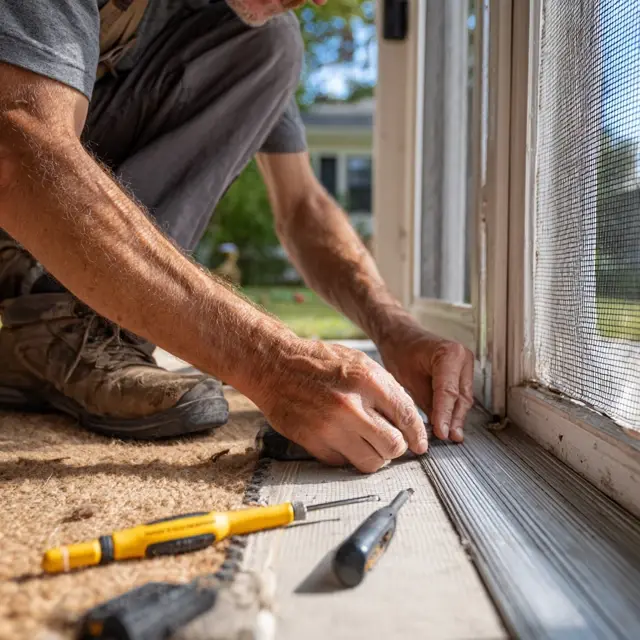Tools Needed for DIY Screen Door Mesh Success
Installing a screen door mesh kit is a simple and rewarding DIY project, but having the right tools can make the difference between a flawless installation and a frustrating one. The correct equipment helps ensure accurate fitting, long-lasting durability, and a professional finish, even for first-time DIYers.
Why Tools Matter for Screen Door Mesh Projects
Using the right tools streamlines the process, prevents damage to the mesh, and saves time. Without proper equipment, you may end up with sagging mesh, gaps, or uneven cuts that reduce both performance and appearance.
Essential Tools for DIY Screen Door Mesh Success
1. Measuring Tape
Accurate measurements are the foundation of any successful mesh installation. A measuring tape ensures your mesh fits snugly without unnecessary trimming or gaps.
2. Scissors or Utility Knife
Sharp scissors or a utility knife make cutting mesh precise and smooth, preventing frayed edges and uneven lines.
3. Spline and Spline Roller
If your kit uses spline to secure the mesh into the frame, a spline roller is essential. It presses the spline evenly, holding the mesh tight and wrinkle-free.
4. Straight Edge or Ruler
A straight edge helps guide cuts for clean, professional-looking edges, especially when trimming excess mesh.
5. Clips or Painter’s Tape
These hold the mesh in place temporarily during installation, making it easier to adjust before final fastening.
6. Cleaning Cloth
Always clean the frame before attaching mesh. Dust and dirt reduce adhesive strength and can cause early detachment.
Optional but Helpful Tools
- Velcro strips: Useful for removable mesh installations.
- Adhesive strips: Provide extra hold for lightweight kits.
- Small screwdriver or awl: Helps tuck mesh into corners neatly.
Step-by-Step Tool Use in Installation
- Use a measuring tape to determine door dimensions.
- Cut mesh with scissors or a utility knife according to measurements.
- Hold mesh in place with clips or painter’s tape.
- Secure with spline using a roller, or attach with adhesive strips as per your kit.
- Trim excess mesh with a straight edge and utility knife for a neat finish.
Tips for Tool Efficiency
- Keep blades sharp to avoid snagging the mesh.
- Work on a flat, clean surface when cutting mesh.
- Test spline pressure with a scrap piece before starting on the main frame.
- Double-check measurements before making cuts.
Conclusion
Equipping yourself with the right tools is the first step toward DIY screen door mesh success. From accurate measurements to secure fitting, these tools make installation faster, smoother, and more professional. For more installation guidance and kit options, explore our DIY screen door mesh kits guide and start your project with confidence.




